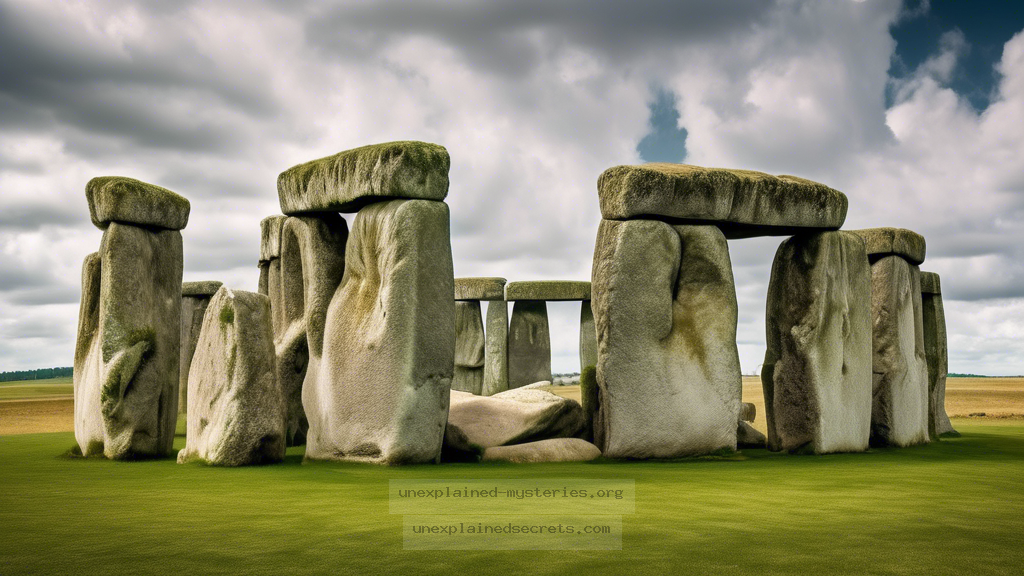What Secrets Lie Behind the Construction of Stonehenge?
What Secrets Lie Behind the Construction of Stonehenge?
Stonehenge, one of the most iconic and enigmatic monuments in the world, has captivated historians, archaeologists, and mystery enthusiasts alike for centuries. Its massive stones, arranged in a circular formation, raise pivotal questions about the technological capabilities of ancient societies and their spiritual beliefs. This blog post delves into the mysteries surrounding the construction of Stonehenge, exploring its historical context, theories about its purpose, and the implications of its existence in understanding human civilization.
Historical Context of Stonehenge
Located in Wiltshire, England, Stonehenge is believed to have been constructed between 3000 BC and 2000 BC, spanning several generations. The site consists of a ring of standing stones, each around 13 feet high and weighing approximately 25 tons. The historical significance of Stonehenge is profound—it highlights the social organization, engineering skills, and spiritual beliefs of prehistoric people.
Archaeological evidence suggests that the area surrounding Stonehenge was inhabited long before the monument was erected. Neolithic long barrows and burial mounds indicate that the site was a significant cultural and ceremonial center. Additionally, the alignment of the stones with celestial bodies suggests that the builders had a sophisticated understanding of astronomy, which raises further questions about their motivations for constructing such a monumental structure.
Theories of Construction Techniques
One of the most compelling mysteries of Stonehenge revolves around how such massive stones were transported and erected without modern machinery. Several theories have been proposed:
- Wooden Rollers: This theory suggests that the builders may have used logs as rollers to move the stones across the landscape.
- Sledges and Lubrication: Another hypothesis posits that sledges were used to drag the stones, possibly lubricated with water or animal fat to reduce friction.
- Canal Systems: Some researchers have even proposed the use of canals to float the stones closer to the site, particularly for the bluestones sourced from the Preseli Hills in Wales, approximately 200 miles away.
The effectiveness of these methods remains a topic of debate among archaeologists. However, recent experimental archaeology projects have demonstrated that it is theoretically feasible to transport and erect the stones using these ancient techniques.
Spiritual and Cultural Significance
Beyond its architectural marvel, Stonehenge is believed to have served as a spiritual and ceremonial site. The alignment of the stones with the summer and winter solstices suggests that the monument may have been used for astronomical observations or religious rituals. For instance, during the summer solstice, the sun rises directly above the heel stone, casting light into the center of the monument.
Archaeological findings, such as human remains and artifacts, indicate that the site was also used for burial practices. This reinforces the idea that Stonehenge was a sacred space where life, death, and celestial events were intertwined in the beliefs of its builders. Various interpretations have emerged, from a Druidic temple to a healing site, reflecting the diverse cultural significance attributed to Stonehenge over the millennia.
Technological Implications and Engineering Marvel
The construction of Stonehenge implies a remarkable level of societal organization and technological prowess. The ability to mobilize a large workforce, coordinate logistics, and execute complex construction techniques points to advanced planning and social structures. It is estimated that thousands of people may have been involved in the construction process, whether as laborers, craftsmen, or leaders.
Furthermore, the precision of the stone placements, particularly their alignment with celestial bodies, indicates an understanding of geometry and astronomy that was quite advanced for its time. This raises questions about the knowledge transfer across generations and the potential for lost technologies that may have existed in prehistoric societies.
Alternative Perspectives on Stonehenge’s Purpose
While many accept the theories surrounding Stonehenge’s astronomical and ceremonial uses, alternative perspectives challenge mainstream interpretations. Some propose that Stonehenge served as a social gathering place, where communities came together for trade, cultural exchange, and social cohesion. Others suggest it may have been a site for unique rituals that combined various cultural practices, reflecting the diversity of the peoples in the region.
These alternative views highlight the complexity of interpreting ancient structures and the importance of considering multiple cultural lenses. It emphasizes that our understanding of Stonehenge is continually evolving as new discoveries are made and new analytical techniques are developed.
Common Misconceptions About Stonehenge
Several misconceptions about Stonehenge persist in popular culture, often fueled by sensational narratives. One common myth is that Stonehenge was built by the Druids, a group that emerged much later than the monument’s construction period. In reality, the Druids, associated with Celtic culture, did not exist when Stonehenge was erected.
Another misconception is that the monument was solely a burial site. While human remains have been found nearby, indicating funerary practices, the primary purpose of Stonehenge likely encompassed a broader range of spiritual and social functions.
Best Practices for Investigating Ancient Mysteries
Studying ancient mysteries like Stonehenge requires a multidisciplinary approach that combines archaeology, history, anthropology, and even modern technology. Here are some best practices for researchers and enthusiasts alike:
- Interdisciplinary Collaboration: Engage experts from various fields to gain a comprehensive understanding of the site.
- Embrace Technology: Utilize modern techniques such as ground-penetrating radar, 3D modeling, and geoarchaeology to uncover hidden aspects of the site.
- Public Engagement: Involve local communities and the public in preservation efforts and educational programs to foster a deeper connection to the site.
Future Developments and Ongoing Research
Stonehenge continues to be a focal point for archaeological research, with ongoing excavations and studies revealing new findings. Recent projects have focused on the surrounding landscape, exploring the broader context of Stonehenge within the prehistoric environment. This includes studying the ancient pathways leading to the site and other related monuments, which may provide insights into the cultural practices of the time.
Additionally, new technologies are being employed to analyze the stones themselves, including isotopic studies that might reveal more about their origins and transportation methods. As research evolves, so does our understanding of this ancient wonder, opening up new avenues of inquiry and discussion.
Conclusion: The Enduring Mystery of Stonehenge
Stonehenge remains one of the most fascinating and enduring mysteries of the ancient world. Its construction speaks to the ingenuity and social organization of prehistoric societies, while its spiritual significance invites us to ponder the beliefs and practices of our ancestors. As we continue to unravel its secrets through ongoing research and technological advancements, Stonehenge serves as a powerful reminder of humanity’s quest for understanding our place in the cosmos.
Whether viewed as a temple, an astronomical observatory, or a social hub, Stonehenge encapsulates the complexity of human history and the mysteries that continue to fascinate us. As new discoveries emerge, our interpretations may evolve, but the allure of Stonehenge will undoubtedly endure for generations to come.
Other Articles
Recent Posts
- What Happened to Flight MH370? The Conspiracy Theories That Still Haunt Us
- What Secrets Lurk Within the Walls of the Infamous Trans-Allegheny Lunatic Asylum?
- What Evidence Supports the Existence of Bigfoot in the Pacific Northwest?
- What Happened to the Indus Valley Civilization? Unraveling the Mysteries of Ancient Urban Life
- Can Telepathy Be Scientifically Proven Through Laboratory Evidence?







